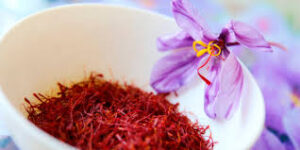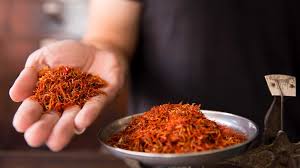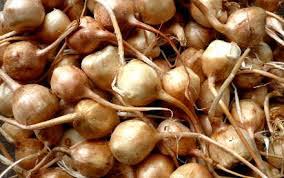WHY START A SUSTAINABLE SAFFRON PRODUCTION OPERATION NOW?


Saffron is collected from the blossoms of Crocus sativus(Iridaceae) commonly known as saffron crocus or saffron bulbs. It is propagated by bulbs called corms. Each corm forms new bulbs, and this is how the plant multiplies. The process is tedious and meticulous. This explains why saffron spice came to be so precious as to be called the “red gold”.
SOIL
The Crocus sativus grows in many different soil types but thrives best in calcareous, humus – rich and well-drained soil with a pH between 6 and 8. Saffron corms can also grown in dry or semi-dry soil types. However, you need to keep in mind that during periods of drought in autumn and spring, you need to be able to irrigate the land. If you plant the saffron corms in wet or semi-wet soil types you must be sure that your land is well – drained to prevent corms from rotting or getting infected during periods of wet weather.
PLANTING
When planting saffron virgin patch of land, corms for the first time, choose a virgin patch of land, that is, no other tubers or saffron corms have been planted there before, if possible. Before planting, it is advisable to till the soil 20 to 50 centimetres deep to keep the planting beds loose and well – aired, incorporating organic fertilizer during the process. Saffron crocuses are sun- worshipping plants so they love to be planted in the dry open fields rather than in the shade.
WEED CONTROL
Mulching will control the weed growth to some extent. Plants should be mulched with saw dust. Weedicides can be used to check the complete weeds in the saffron field.
FERTILIZERS
Farmers should apply about 35 tonnes of well decomposed farm yard manure in the field before planting. Annual fertilizer application of 20kg “N”, 30 kg “K” and 80kg “P” per h/a is beneficial in autumn and again immediately after flowering.
YIELD
Generally, 150 to 160 Saffron flowers are needed to make 1 gram of dried saffron. Usually, during the 1st year of plantation 60 -65% of corms will produce 1 flower each and in the subsequent years each corm will produce about 2 flowers.
BENEFITS
Saffron is being used in culinary as well as medicines. Saffron is mainly used in culinary seasoning and to get colour, cottage cheese, Biryanis, meats, liquors, cordials, cakes, confectioneries, breads and Mughlai dishes. Saffron is used commercially in perfumes and cosmetics. When it comes to medicinal use, Saffron is used in fevers, Ayurvedic treatment to heal arthritis, impotence and infertility.



NEED TO KNOW MORE OR HELP WITH A PROFESSIONAL AND WELL – STRUCTURED BUSINESS PLAN CONTACT US NOW AT: (27)84 583 3143 OR EMAIL – money@global.co.za
WHY START A SUSTAINABLE SAFFRON PRODUCTION OPERATION NOW? Read More »